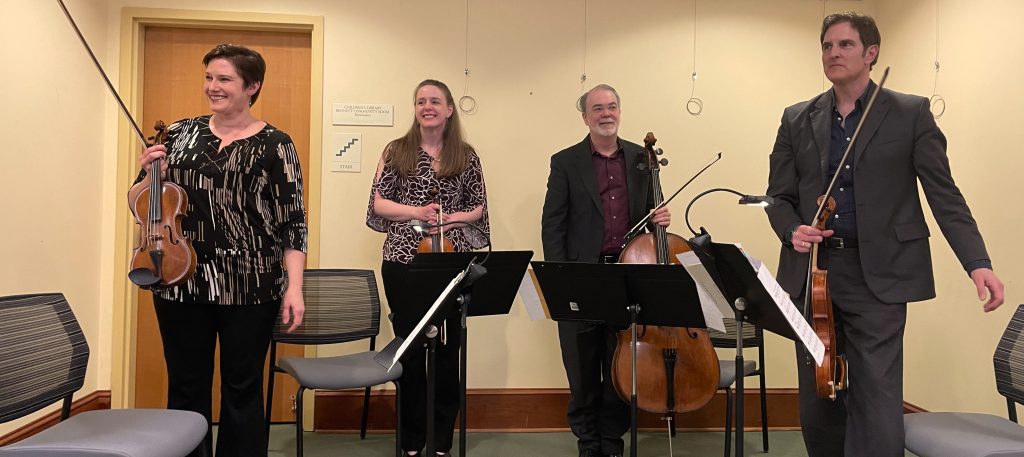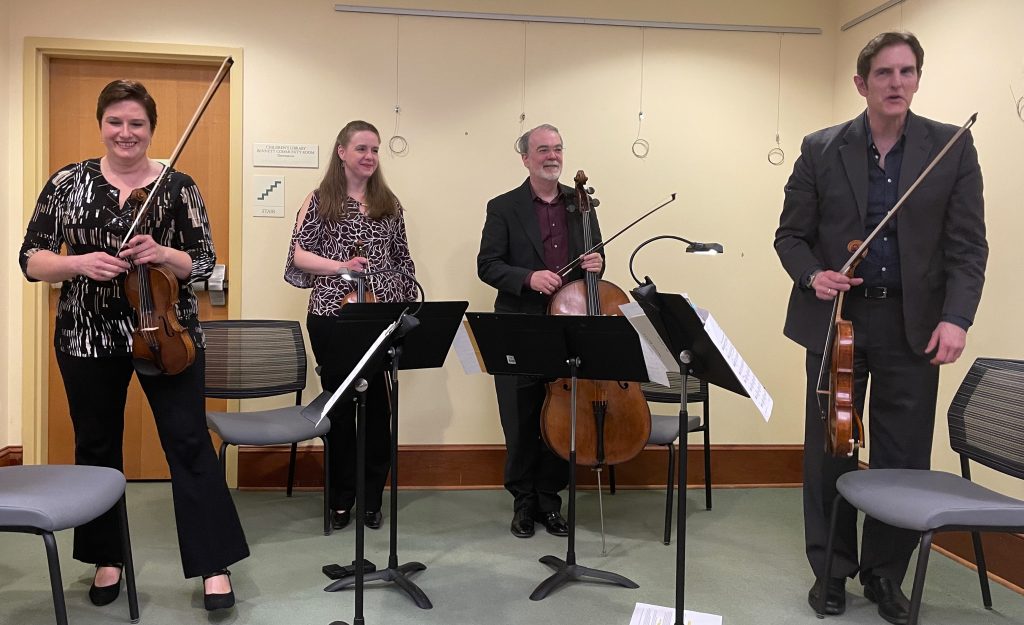
by Kevin T McEneaney
The opening program Saturday night with The Taconic String Quartet at the Millbrook Library (sponsored by the Millbrook Arts Group) featured String Quartet in C major, Op. 33, no. 3 by Josef Haydn. From the very first ensemble notes, they let it be known that they were here to play in tight unison. Nicknamed the “Bird,” this is one of the most joyous works by Haydn. The opening Allegro imitates the sound of chirping birds at the first blue before dawn.
First-violinist Heather Braun lead with perky, tremolo notes that echoed in air until there was a pulsating gaggle of birds singing simultaneously a hymn to the rising sun. Once the sun was up, and inspired by assorted birds, the composer gets to work, producing more complex, ambiguous harmonies and thoughtful questions as to where this is all going as he scores his sheet music with playful rondo variations. Happy with his work, the composer goes for a stroll, which becomes a dance with Nature, a mellow meditation on the diverse glories of plants, trees, and flowers as all four instruments play softly on their lowest strings; the morning stroller returns to his desk recalling those first rays of dawn and toys comically with twittering violins; here Joana Genova joined Heather Braun in a love-duet amid the background chatter of viola and cello. Happy in Nature and the concept of love, the concluding Presto solves the ambiguities of previously explored minor dissonances and major, lyrical harmonies as all four instruments (with Ariel Rudiakov on viola and John the Bulgarian on cello) acclaiming in unison the glories of Nature.
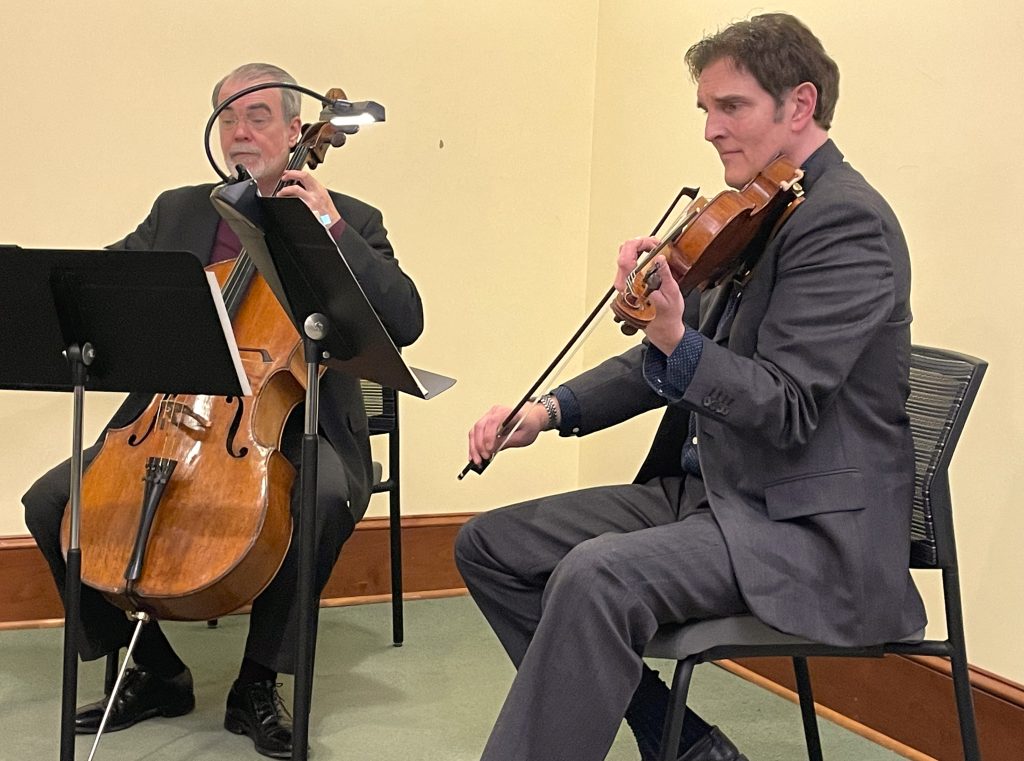
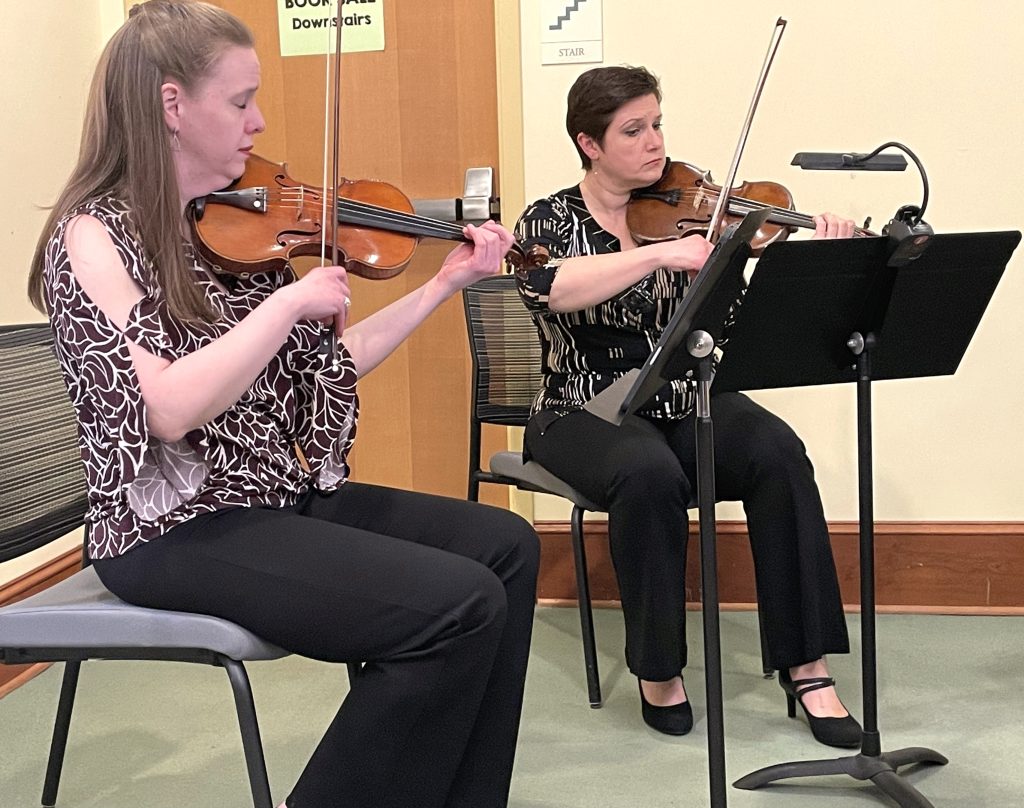
George Theophilus Walker (1922-2018) was an American composer, pianist, and organist—the first African American composer to win the Pulitzer Prize for Music which he earned for Lilacs (1996) that celebrated the Walt Whitman poem on the death of President Abraham Lincoln. They played his String Quartet No. 1 written for his violinist son Gregory T.S. Walker who composed the first “rap” symphony.
This short lyrical work delivered soulful passage in C major with seven sharps redolent of African American church musical-laments. The haunting melody still rings in my ear as I write.
Leyendas: An Andean Walkabout for String Quartet (2001) by Gabriela Lena Frank (b. 1972) offered six movements on South American music. They played movements one, four and six. In the opening Toyos movement four classical instruments imitated various sounds parallel to the range of indigenous panpipe, which had the effect of translating traditional folk music into contemporary minimalism; this unusual approach was both shocking, innovative, and illuminating. Chasqui described the journey of fast-running indigenous messengers; to create this lighter, faster effect the sound of flute and strummed guitar were imitated (with John’s cello playing high notes). Concluding Coqueteos dramatized male romance singers ever growing into a larger chorus (again with fierce string picking by all which was astonishing). This finale augmented the theme of love as an awesome wonder that transforms society to a higher level of awareness. It was a marvel to hear traditional Western instruments played in this manner; the difficulty of playing demanded extraordinary plucking!
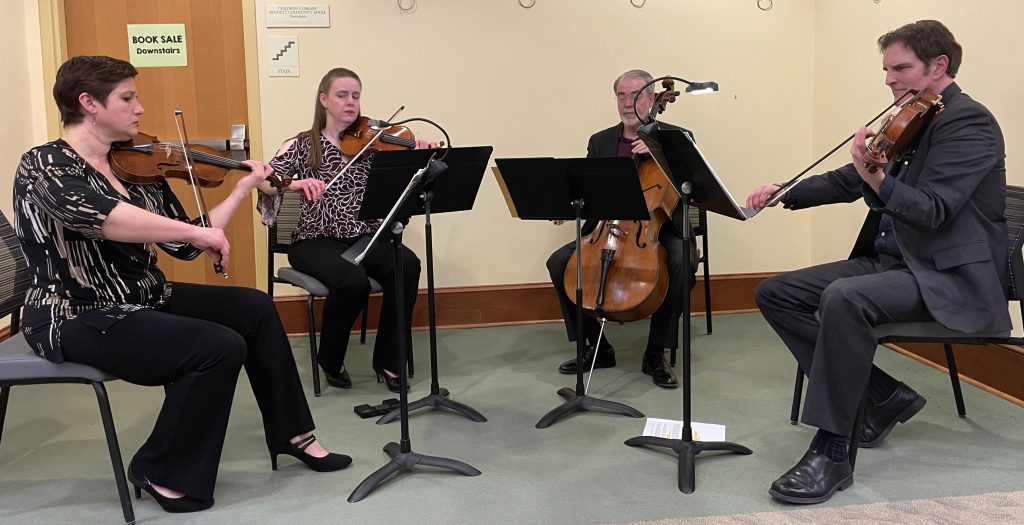
The Japanese composer Sato Matsui writes and plays for the Kagura String Quartet now located in Paris where she moved after a few years in the US. The Taconic Quartet played her Amaterasu String Quartet which is eight minutes long. The work was inspired by ancient myths about this female fertility goddess.

There is a mystical, ethereal, transcendence in this lyrical work that combines Japanese traditional sounds with Western classical music. I found the synthesis exciting and engaging with a mellow, unpredictable edge.
They played the first movement of a little performed violin concerto by Maurice Ravel, composed as a student when he was under the influence of Frederick Delius and George Enescu, who was a classmate; this controversial and unorthodox work was discovered and first published on the centenary of the composer’s birth in 1975. The first page of the work has nine meter changes in as many bars. At the time many found the work far too Modernistic, although this first movement concludes with Romantic sensibility. Here all displayed their formidable skills; they were all in top form and I thought this was the highlight of the concert. (I confess to being a fan of Ravel.)
Jesse Montgomery is a noted contemporary composer and violinist who grew up on Manhattan’s lower east side, yet her compositions favor foregrounding Appalachian fiddle tunes in the context of Classical music. The Quartet played Strum, which once again displayed Heather’s vigorous fiddling ability. This work featured subtle background strumming with cello and viola.
The finale was a recent klezmer wedding tune Budget Bulgar by the Russian émigré Lev Zhurbin. This was another frantic-paced showcase which lasted only four minutes, yet one felt that ten minutes were compacted into this ecstatic composition.
This free concert was a fascinating romp around the globe with varied rhythms and moods that delighted the audience of about fifty in the library.
